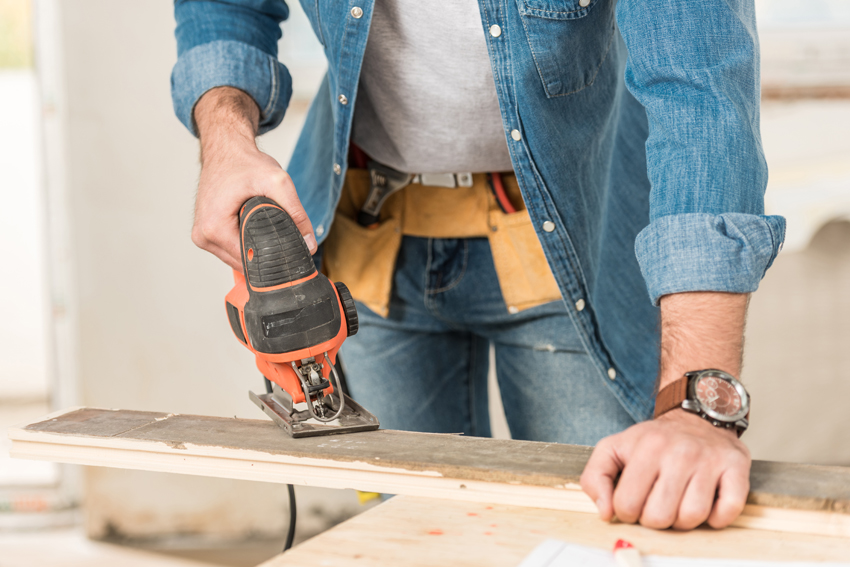Photo courtesy DepositPhotos
Immediately after the COVID-19 pandemic in summer 2020, home renovation projects soared across the United States as people improved upon their living spaces, whether it be working from home or spending more time indoors.
According to a survey from Porch.com, 75% of homeowners completed a renovation project during the pandemic. Home improvement project spending has increased from $328 billion in 2019 to $472 billion in 2022, with an estimated spending of $485 billion this year, according to a study by the Joint Center for Housing Centers of Harvard University.
While that growth has slowed due to rising insurance premiums and interest rates, supply costs, heightened inflation, among other concerns, renovation projects can be on top of mind – in the down time of summer – for people looking to renovate, or purchase a home in need of repairs. If any of the above is being considered, home renovation loans are mortgage lending option tools to finance add-ons, remodels, and repairs when homeowners lack cash on hand.
What are home renovation loans?
Home renovation loans typically cover renovating bathrooms and kitchens, adding home offices, updating flooring and lighting, outfitting outdoor areas, improving basements and attics, converting garages into guest rooms, and updating/repairing roof or structural components.
“There are many kinds of home renovation loans, so it’s important to consult with a lender to find the best products that meet your specific needs and current financial situation,” said Scott Schellhaas, vice president of mortgage lending at Metairie Bank. “Be confident these repairs will increase your property value, improve your quality of life or save you money in the long run, and also be aware of all upfront costs, repayment terms, and any additional insurance costs you may encounter to cover the added value on your home.”
Also, before meeting with a lender, it’s best practice to consult a general contractor for a quote on your repairs to determine both current home value and anticipated home value after repairs, said Danielle Gilyot Smith, mortgage operations director for NOLA Lending-Fidelity Bank.
“I tell homeowners all the time that the first important step of this process is to find a reliable, licensed general contractor that will provide a quote to the repairs you anticipate making, that way you have an idea of how much you want to borrow before you consult with us,” said Smith. “That information puts you in a better position walking into the loan office.”
Smith added that homeowners should review their credit score, know how much equity you have, shop for various quotes and terms on the different programs available, and be realistic about your timeline to complete your renovations, often coinciding with the timeline of the contractor you hire.
Typical home renovation loans and structuring
There are multiple loan options available including a purchase mortgage that includes additional funds for renovations, often referred to as a One Time Close (OTC) construction mortgage. If a homeowner is currently locked in to a low-rate mortgage, then one of the more common home renovation loans is borrowing against home equity either through home equity loans or home equity lines of credit, known as a HELOC. Home equity loans are typically fixed-rate products; home equity lines of credit are typically variable rate.
“Borrowing against home equity means you’re lending against what’s there already,” said Joe Uzee, mortgage division president at Gulf Coast Bank & Trust Co. “You may or may not know the cost of your renovation, so then a home equity loan, usually a HELOC, allows you to borrow around 80-90 percent of your home’s value minus what you currently owe. You can receive the funds in a lump sum or draw out as you need them.”
Uzee added that the interest rate is typically tied to the Wall Street Prime (WSP) rate, currently 8.25%. There could be a margin added by the bank to that rate. “Be aware that this rate can fluctuate up or down with the WSP,” Uzee said. “These equity loans give you some flexibility since you can renovate at your own pace, with or without a builder.”
The most common renovation loan is the One Time Close (OTC) construction loan. This loan allows for the value to be based on the final appraised value after renovations if done as a refinance, or the value to be based on the acquisition cost of the property plus the renovation costs, if done as a purchase and the appraisal supports that value. “Benefits to the OTC are a locked interest rate up front, that can be floated down at the completion of the renovation if rates are lower,” Uzee said. “Only one set of closing costs are needed. It should be noted that you have 12 months to complete the renovation and most lenders require a licensed contractor.”
Cash-out refinancing is another home renovation loan option but typically not in a housing market with higher interest rates. Cash-out refinancing means that you replace your existing mortgage, refinancing for a higher amount, and the difference is taken out in cash that can be used for repairs. “This option is typically passed over for a Home Equity Loan or Line in an environment when homeowners already have previous, favorable interest rates in the 3’s and 4’s,” said Schellhaas. “We really only see this when interest rates are somewhat comparable or better than the current borrower’s existing interest rate.”
Current home mortgage activity slows in 2023
All three banking executives interviewed agreed that there is definitely a slowdown in mortgage loan activity, including home renovation loans, over the past year.
“There is a definite hesitancy in mortgage loan activity, but that’s with people facing higher costs of doing anything in general right now,” Smith said. “Despite higher insurance premiums and interest rates, inflation, supply prices, and additional factors, one thing we are seeing is that low inventory and housing consolidation is encouraging people to consider renovating their homes and improving upon their living spaces since buying a new home is so limited right now.”
In addition to immediately after COVID, Schellhaas said home renovation loans are inquired about locally when “insurance money may not cover enough to repair or renovate after a hurricane or major storm. You always want insurance to cover those repairs, but when it doesn’t, renovation loans can be considered an option,” he said.
And when considering the options, education is critical, said Uzee. “Know every program available and how each tailors to your specific situation and appropriate use,” he said. “As lenders, we can’t stress enough education before homeowners commit to any loan.”
i
Read the full article here














